A pool filter is a rather passive piece of equipment. With no electrical components and no moving parts unless you include valve handles, it is mainly a tank that water flows through. But there is still a complex swirl of activity going on in there, and part of that is pressure.
Pressure Gauge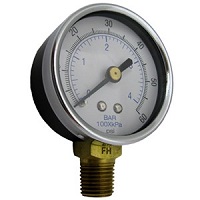
To get a read on this, your filter has a pressure gauge usually found on top of the tank. The gauge has a round face numbered 0 – 60, a needle that indicates the pressure in pounds per square inch (psi), and a clear protective lens. This small part is key to maintaining your filter and therefore your entire pool.

What’s Normal?
For your pressure gauge to be of any use at all, you first need to know the normal operating pressure of your filter. Ideally this is a number you should record upon installation of your filter so you have a benchmark for all subsequent pressure readings. If it’s not a new filter, then you want to note the starting pressure after your filter has been cleaned. This number is not the same for all filters as there are way too many variations from one pool to another.
Normal pressure means pool circulation is in good order, with the pump’s suction drawing water, passing it through the filter, and returning it to the pool at the correct gallons per minute. This is the sweet spot where pool owners can lean back in that lounge chair and relax, for a little while anyway.
Too High
Eventually the inevitable will occur – a higher than normal reading on that gauge. The rule of thumb is that a reading 10 psi over normal indicates it’s time to clean the filter. Cartridges that need to be cleaned, or sand or D.E. that needs to be backwashed are usually the cause of the higher reading. In this case, the pump is still doing its job but the dirty filter media is slowing down the return of water to the pool and raising pressure within the tank. In most cases, cleaning will decrease the pressure but sometimes replacement of the media is required. Consider replacing filter media if you clean repeatedly and still see high pressure readings.
Too Low
Of course, the other scenario is that your reading might be too low; 5 psi below normal should get your attention. This typically indicates that water going into the filter is somehow impeded. Pressure within the filter tank is created by water so a low reading means restricted flow. This comes from a source other than the filter itself; the problem is that the pump is sucking less water than normal. In this case, check for debris clogging the pump basket and impeller, and any air leaks at the pump (the pump lid and/or lid o-ring are common culprits). If the pump looks good, make sure the main drain covers aren’t blocked and check the pool water level to be sure enough water is reaching the skimmer. If you can’t resolve low pressure after checking and correcting these most common causes, then you might require a qualified pool tech to assess the problem.
The gauge should also be inspected periodically to be sure it is in good working condition. High or low readings could come from the gauge itself. Signs of needing a new one are cracked or foggy glass or a needle that sticks. If the gauge is questionable, it’s worth spending the average of $15 – $20 to replace it and ensure more accurate readings.
Air Relief Valve
Working alongside the pressure gauge is the air relief valve. Air builds up inside the filter tank when the pump has been off or 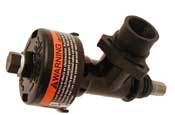 has lost prime. Upon start-up, opening the air relief provides a vent for trapped air. This is vital for a couple reasons. First, when the pump starts, water starts rushing through the system. If trapped air is not released, it is compressed by this flow of water, increasing pressure and possibly compromising pool equipment i.e., causing the top of the filter or the pump lid to blow out. Second, trapped air competes with water for space inside the tank and can prevent water from flowing through the full filtration area available, reducing your filter’s efficiency.
has lost prime. Upon start-up, opening the air relief provides a vent for trapped air. This is vital for a couple reasons. First, when the pump starts, water starts rushing through the system. If trapped air is not released, it is compressed by this flow of water, increasing pressure and possibly compromising pool equipment i.e., causing the top of the filter or the pump lid to blow out. Second, trapped air competes with water for space inside the tank and can prevent water from flowing through the full filtration area available, reducing your filter’s efficiency.
There are quite a few ways air can get into the system so there will be different scenarios that require releasing it through the air relief valve. Some of the possible causes are opening the pump lid (typically to prime the pump, clean the strainer or replace parts), backwashing, vacuuming with a cracked hose, or a water level that has dropped below the skimmer.
Both the filter pressure gauge and air relief valve are important to the overall health of your pool’s circulation and filtration systems. Make sure yours are in good shape and if not, check with us for these easily replaceable and inexpensive parts. We have a huge selection of filter parts for filters both well-known and obscure.
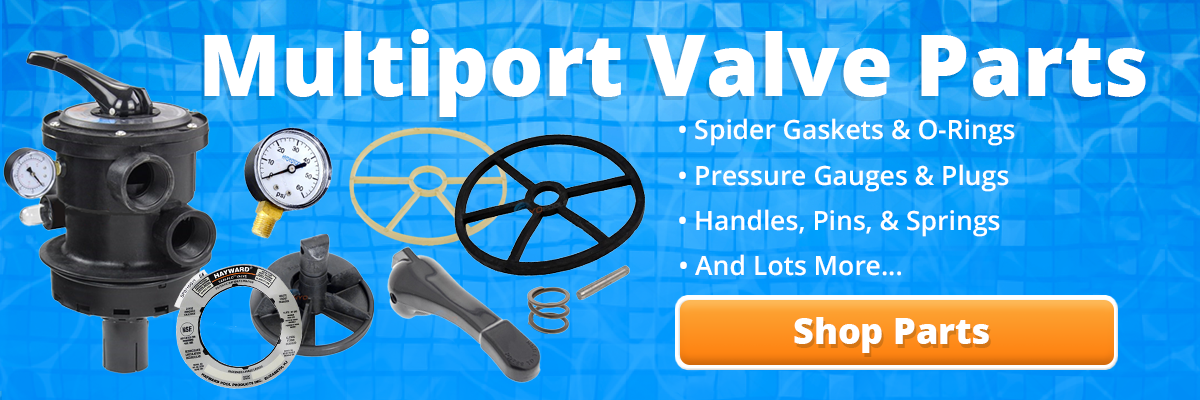
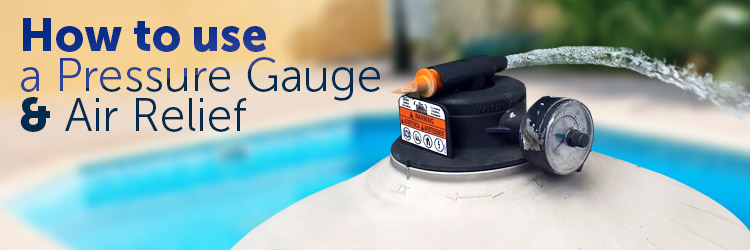
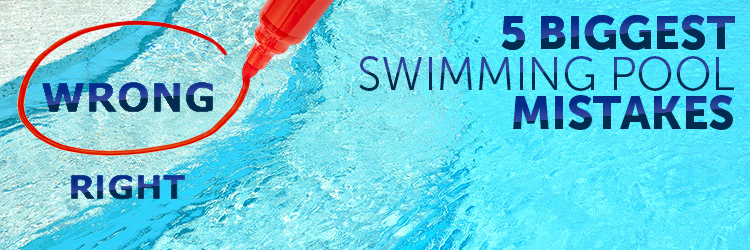
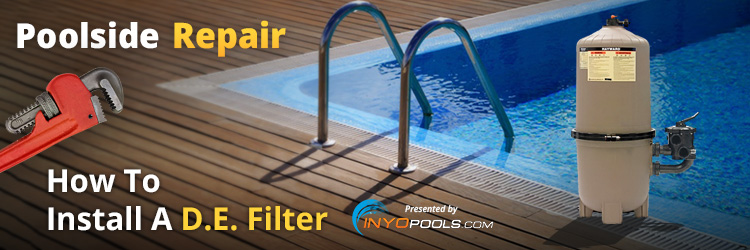

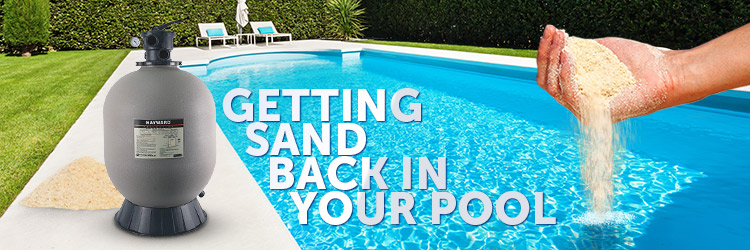






For some reason my skimmer is not getting water, should we do something with the pump or the filter?
What do you mean by it’s not getting water? Is the water level not up to the skimmer? Is there a blockage in the pipe?
First, you have to figure out what is causing the low flow, then you can figure out what to do next. This guide shows how to inspect a system suffering from low pressure, give it a read – How to Correct Low Water Pressure in Your Pool System
We recently changed our Hayward sand filter. We followed the directions and backwashed before starting the filter. 24 hrs. later the pressure was up so high no water was returning to the pool. We did a backwash and it returned to normal. Later the same day, same thing. Another backwash and it was ok. 24 hours later, same thing. This time it has gone 3 1/2 days and it again has stopped returning water to the pool. We have had a pool for 20 years and never had to backwash more than once every 10-14 days. What could be the problem? Thanks.
My first impression is that either the new filter is too small for the pool and/or pump, or you are dealing with some sort of algae bloom.
Let us start with the filter size; did you replace the filter with a similar or larger sized filter tank? If you know the model numbers of the two units, that would be handy, just to confirm. When you changed the filter, did you also install a new pump? If so, was the pump a higher horsepower than your previous?
Regarding the algae bloom, is your pool murky, cloudy, greenish? if it is, then your filter may be getting clogged with algae or some other organic material
Should I release air from the filter tank every time I start my pump?
Hello!
I am no longer getting a steady stream of water flowing from the pressure relief valve, just some air and then a trickle of water. I have the Hayward xstream single speed. Psi is normal, at 10. Shouldn’t water eventually coming surging out?
I’m new to pool ownership. I replaced a nonworking gauge and it seems to work fine, but the “clean” pressure is really low, only about 3 PSI. Is this normal? I have a Posi-Flo 135 sqft silver bullet filter. Also, I don’t seem to have a air bleed filter, not sure where it would go if I had one. Any advice? Thanks!
Hello David – do you know the model number for your filter? Sta-Rite used Posi-Flo in a few different series that vary in design. Is your model look like 135TX, PTM135 or something else?
What if I open my PRV and water only runs out? I was expecting something more high pressure… with water blasting out a few feet. It’s a Hayward DE Filter. Any concerns?
Different systems run at different pressures. Is it reacting differently than before? Also, do you have a dual or variable speed pump that was running at a lower RPM at the time of this test?
Hey Matt
I am needing a replacement for my pool pump but can’t seem to find the exact one. I now have a Waterway Hi-Flo II 48-frame above ground 115V 2HP dual-speed. It has a part #PH2200 – 6RP. It is making a loud whistling type noise and the neighbors are becoming annoyed 😠. Can you suggest a replacement and where I can order one? Thanks so much!
We do have the PH22006R listed on the site, but we currently do not show one in stock. Most current a/g pumps top out about 1.5 HP, but that should be suitable for pools up to 36′ round. A couple of 1.5 HP 2-speed above ground pool pumps to consider: Pentair Dynamo and the Hayward Matrix
I have a Hayward DE filter. Pressure has been been fine since opening in May. Weekly backwashing. Water is crystal clear, no algae. Decided to clean and inspect the filter as it was not done yet this season. Cleaned it, inspected the grids, no tears or cracks. No leaks in any of the equipment. No bubbles in pump basket. DE replaced and pressure was at 10, which is normal for my pool. Great pressure out my jets. No DE returning through the jets. Two days later, pressure on my gauge reads 25. I backwash, rinse, backwash. Release the air pressure. (Even the backwash water was clean, just gray from the filter powder). Add the DE again. Two days, pressure up to 25 again. I am stumped. Any ideas?
I have a Hayward D.E. filter and have been trying to correct high pressure for two weeks now. It was reading at over 35. We have tried cleaning the grids and the strainer basket. We replaced the multi port valve, and we got a new motor for the pump. Pump is a single speed. We finally took the grids apart tonight and cleaned each one with a power washer. After putting it all back together, pressure was 10 for a while but is now 25. The only thing I know of is that the air breather tube is broken. The guy at the pool store told me this part has nothing to do with pressure. Is that true? Any other suggestions?
New to pool owning…finally got the rusty water cleaned. We have been trying for a week to get Wanda the Whale vacuum to work. We have pressure in the hose all air bubbles out of Wanda and nothing. Our Hayward sand filter and pump have 0 psi as they should… frustrating ready to throw it all away… Help please
Your pump and filter should not have a pressure reading of 0PSI if they are running. Take a look at this guide: How to Correct Low Water Pressure in Your Pool System